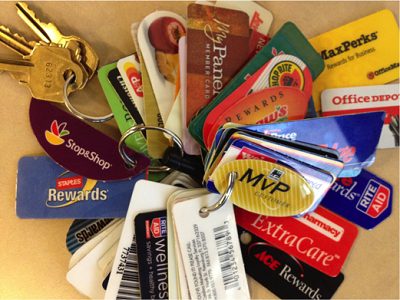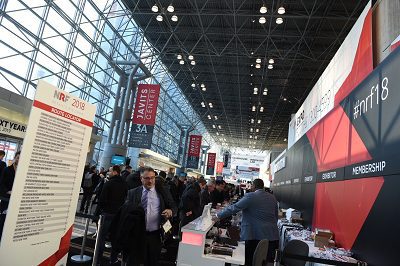Consumers are eager to sign up for loyalty program memberships: average program enrollment has climbed 31% over the past four years, reaching 14.3 programs per member. But getting shoppers into a program is the easy part; it’s much tougher to keep them engaged. On average, consumers are active in only 6.7 programs, less than half the total that they belong to.
The 2017 Bond Brand Loyalty Study, based on a survey of more than 28,000 North American consumers, examined 400+ loyalty programs across more than 10 industry sectors. The good news for retailers is that they already have a head start. Many of the programs offered by retail brands rank high in customer satisfaction, according to the report.
“Consumers love loyalty programs and continue to join more every year, but active engagement rates have remained flat in the past four years,” said Bob Macdonald, President and CEO of Bond Brand Loyalty in a statement. “This indicates that there’s a tremendous opportunity to evolve ‘same-old’ programs to ensure members’ expectations and needs are being met.”
4 Tips To Boost Loyalty Program Engagement
Loyalty programs provide high value for retailers and other brands:
• 81% of consumers agree that such programs make them more likely to continue doing business with a brand;
• 76% say programs are part of their relationship with brands; and
• 67% of consumers modify the brands they purchase to maximize the benefits they earn.
But most programs are still only picking the low-hanging fruit. The Bond report, conducted in collaboration with Visa, offered several best practices for brands seeking to improve their loyalty program offerings:
- Focus on the experience: Rewards are certainly important, but members’ experience with the program is what really moves the needle on satisfaction. Factors such as the digital experience, the “human touch” and how the program aligns with the overall brand presentation offer significant opportunities for brands to differentiate from their competitors.
- Encourage reward redemption: Members that actually redeem rewards are 2X more likely to be highly satisfied with a program compared to non-redeemers — but 20% of members do not redeem their rewards. Encourage members to set redemption goals, make it easy for members to discover their status, and help them find a purpose for accumulating points.
- Mitigate post-redemption attrition: The downside of encouraging members to redeem their points is that many experience a let-down after the prize is awarded. Program operators need to proactively intervene to lessen the attrition risk by maintaining member engagement.
- Align the program across channels and the enterprise: Members who strongly agree that their program experience is consistent across the brand experience a 5.7X lift in satisfaction — but only 27% of members agree with this statement. Retailers should motivate employees to represent both the brand and the loyalty program: when retailers improve members’ understanding of a program, including how it works and its benefits, the result is a 12X increase in member retention. Among members who say program representatives make them feel positive emotions, there’s a 13X higher likelihood of member retention.
“Today’s hyper-informed consumers expect personalized and shared interactions delivered through a combination of human and digital experiences,” said Macdonald. “By engineering the program with every asset of a brand’s loyalty ecosystem and making adjustments to differentiate the member experience, brands can improve engagement and substantially increase program performance for gains in lift, retention and lowered marketing costs.”
Retail Programs Rank High In Customer Satisfaction
Traditional retail brands took eight of the top 12 positions in loyalty satisfaction among consumers. Nearly half (48%) of respondents said they were “very satisfied” with the programs offered by gas/convenience/grocery/drugstore brands, second only to credit cards (52%). Retail specialty drew high ratings from 42% of consumers, while department stores and health and beauty brands scored well with 40% of consumers respectively.
Top loyalty programs based on overall member satisfaction include those offered by:
• Amazon
• Southwest Airlines
• Hilton Hotels
• Costco
• Kohl’s
• Kroger
• Walgreens
• Cabela’s
• Carters
• Sheetz
• Papa John’s
• Panera
But retailers can’t simply coast on high rankings. The survey made it clear that virtually all loyalty programs have room for improvement. For example, 57% of respondents say they would like to interact with loyalty programs on their mobile devices — but 52% of program members don’t even know if their program offers a mobile app.
Some other key findings that indicate the unrealized potential of loyalty programs include:
• Loyalty program customers are sitting on $100 billion of unredeemed loyalty points;
• 57% of members don’t know their points balance, and 38% are unaware of their points value;
• Members who enjoy participating in their programs are 10X more likely to be satisfied — but only 31% of respondents feel this way;
• Only 22% of program members feel they are treated better than non-members. Among this group, those who do feel they are treated better have 3.4X the program satisfaction as those who don’t; and
• Only 25% of members are “very satisfied” with the level of personalization they experience with their program, up from 22% in 2016.













